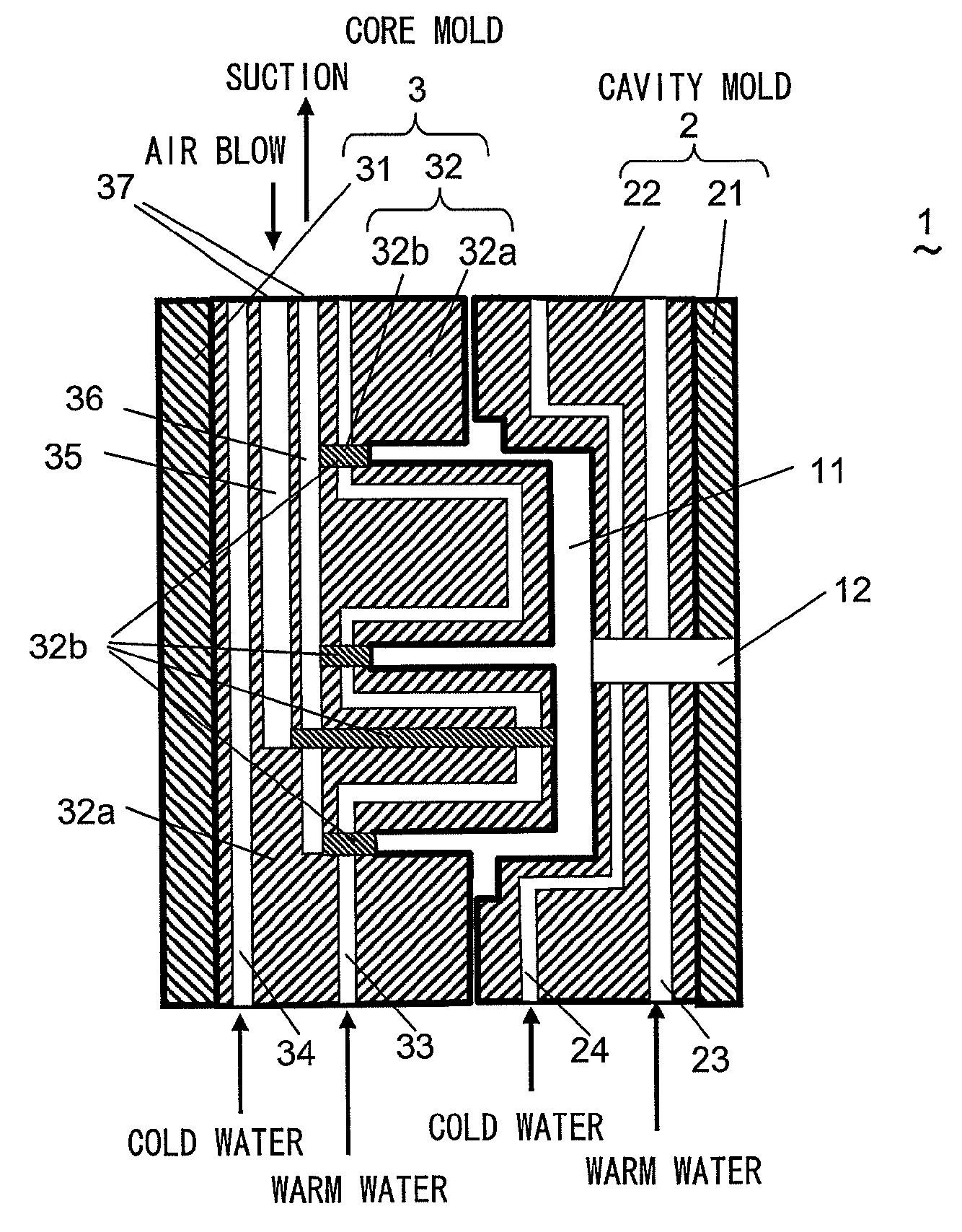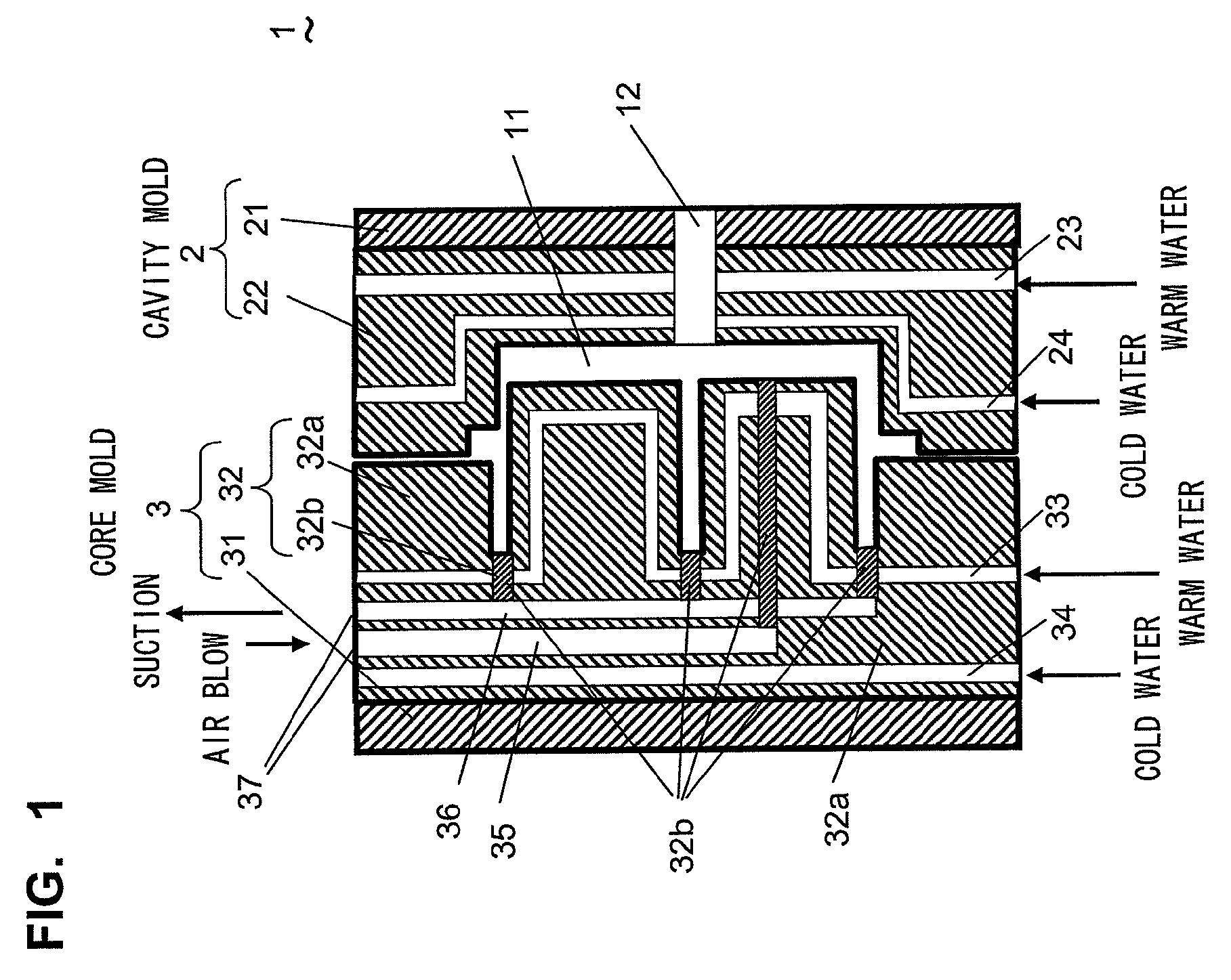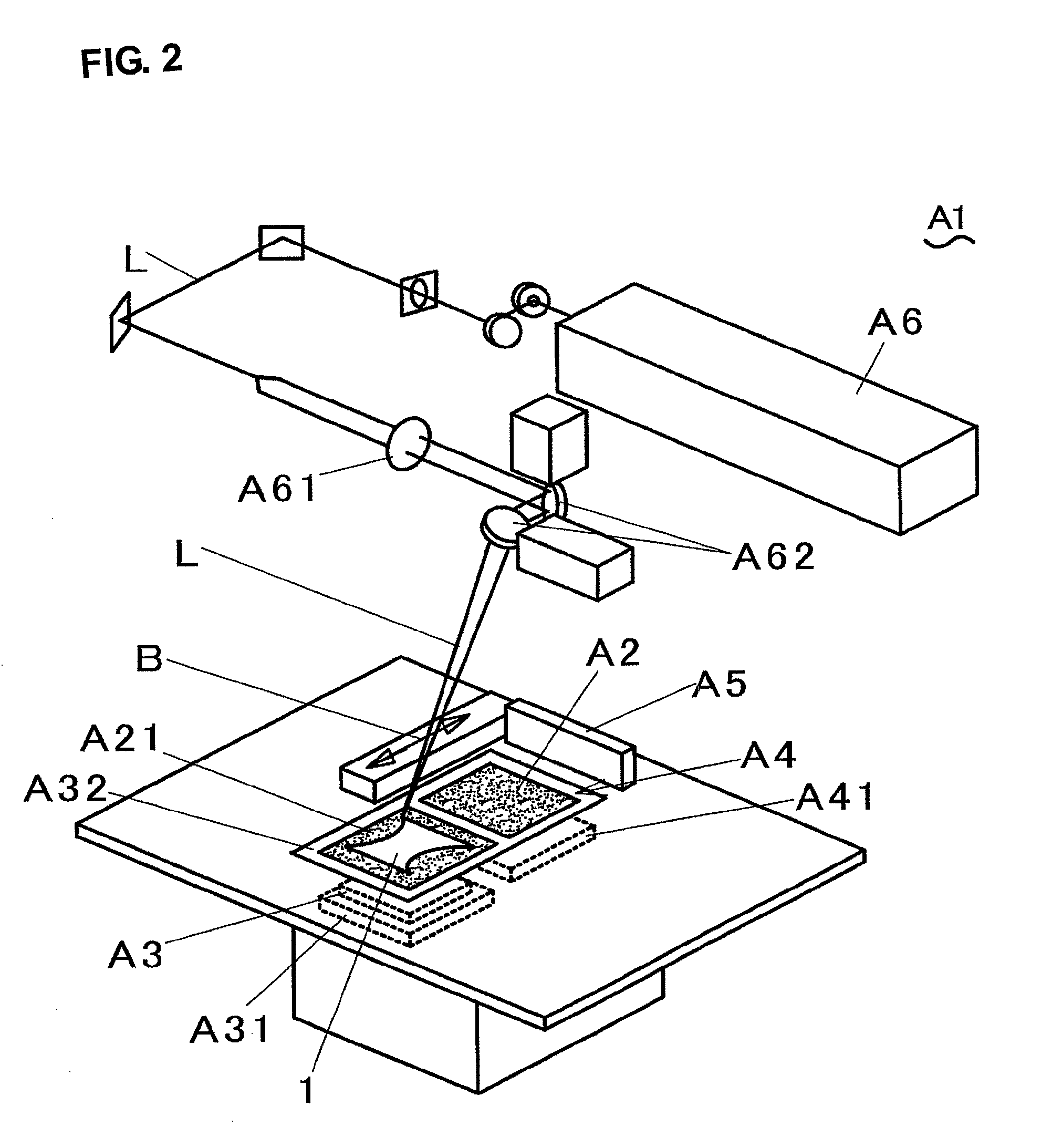Resin injection mold
a resin injection mold and injection molding technology, applied in the field of resin injection molds, can solve the problems of insufficient heating ability and cooling ability of the mold surface, takes time to cool the mold, etc., and achieve the effects of preventing non-infilling of resin, and faster heating and cooling of the resin injection mold surfa
- Summary
- Abstract
- Description
- Claims
- Application Information
AI Technical Summary
Benefits of technology
Problems solved by technology
Method used
Image
Examples
first embodiment
(First Embodiment)
[0021]A resin injection mold (mold, hereinafter) according to a first embodiment of the present invention will be described with reference to FIG. 1. FIG. 1 shows a configuration of the mold 1. The mold 1 includes a cavity mold 2 and a core mold 3, and a resin molding part 11 which molds a resin is formed between the cavity mold 2 and the core mold 3. The cavity mold 2 and the core mold 3 are formed by sintering metal powder on base plates 21 and 31 by later-described metal stereolithography, and forming shaped parts 22 and 32. The shaped part 32 of the core mold 3 is formed from a high-density shaped part 32a except a portion of the shaped part 32, and the portion is formed from a low-density shaping part 32b. A sintered density of the metal powder of the high-density shaped part 32a is 95% or higher. A sintered density of the metal powder of the low-density shaping part 32b is 70 to 95%, and holes are in communication with each other.
[0022]The cavity mold 2 inclu...
second embodiment
(Second Embodiment)
[0040]A resin injection mold according to a second embodiment of the invention will be described with reference to FIG. 7. FIG. 7 shows a sectional view of a core mold 3. The core mold 3 is opposed to a cavity mold (not shown, but this is the same as that described in the first embodiment, and the same is applied in the subsequent embodiments also), and a resin molding part is formed between the core mold 3 and the cavity mold. The core mold 3 is formed from the high-density shaped part 32a except a portion of a shaped part 32, and an air blowing passage 35 formed from a low-density shaping part 32b is formed in a high-density shaped part 32a. The air blowing passage 35 passes through only the interior of the core mold 3. Since warm air and cold air can be blown to the low-density shaping part 32b, the core mold 3 can be heated or cooled faster.
third embodiment
(Third Embodiment)
[0041]A resin injection mold according to a third embodiment of the invention will be described with reference to FIG. 8. FIG. 8 shows a sectional view of a core mold 3. All of surfaces which contact the resin molding part 11 of the core mold 3 are formed from a low-density shaping part 32b and only an outer periphery of the core mold 3 which is not in contact with a resin molding part is formed from a high-density shaped part 32a. An air blowing passage 35 which is in communication with the low-density shaping part 32b is provided in a base plate 31 of the core mold 3. Since an area of the low-density shaping part 32b of the core mold 3 which is in contact with the resin molding part is wide, it is possible to swiftly adjust a temperature of surfaces of the core mold 3 and the cavity mold when warm air or cold air is sent from the air blowing passage 35 to the resin molding part through the low-density shaping part 32b. When gas is sucked from the air blowing pass...
PUM
| Property | Measurement | Unit |
|---|---|---|
| temperature | aaaaa | aaaaa |
| density | aaaaa | aaaaa |
| air permeability | aaaaa | aaaaa |
Abstract
Description
Claims
Application Information
 Login to View More
Login to View More - R&D
- Intellectual Property
- Life Sciences
- Materials
- Tech Scout
- Unparalleled Data Quality
- Higher Quality Content
- 60% Fewer Hallucinations
Browse by: Latest US Patents, China's latest patents, Technical Efficacy Thesaurus, Application Domain, Technology Topic, Popular Technical Reports.
© 2025 PatSnap. All rights reserved.Legal|Privacy policy|Modern Slavery Act Transparency Statement|Sitemap|About US| Contact US: help@patsnap.com



